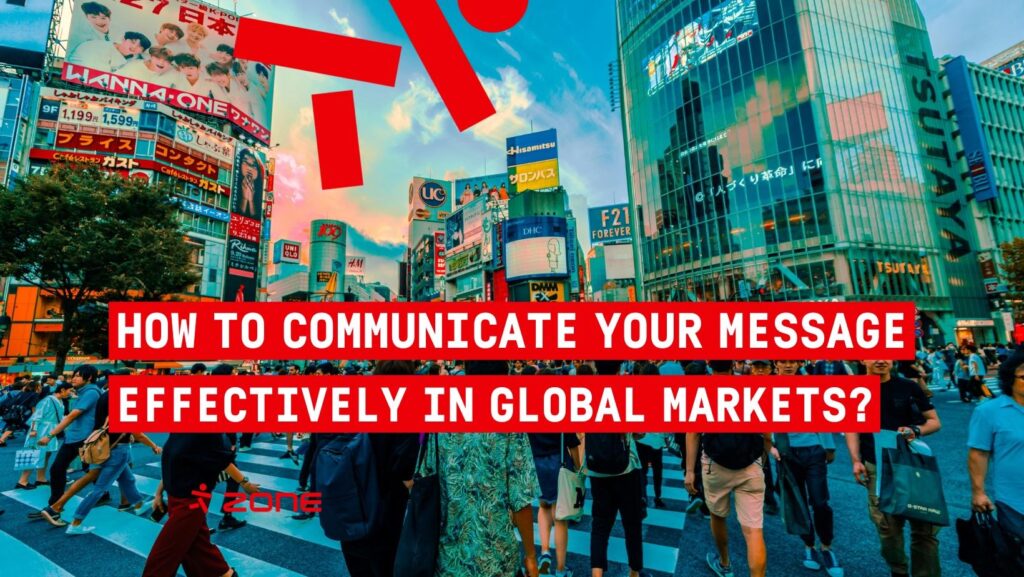This blog post is more than 13 months old and may be out of date.
High-quality and mindful communication is crucial in the digital age, where borders have become virtual and businesses can reach customers worldwide. Success in international markets largely depends on your ability to adapt your message to local expectations and cultural nuances. This is where localisation comes into play – it is a process that involves not just translation, but the holistic adaptation of content and context to the specific culture and language of the target market.

High-quality translation is the key to successful localisation, ensuring that the message reaches the target audience authentically and clearly. Adapting content to the nuances of local culture, customs and language creates a local connection, preserving the richness and cultural accuracy of the language.
Hundreds of marketing, sales and content creation professionals from around the world gathered in London last week. They shared their experiences on how to provide high-quality and accurate translation in global markets and highlighted the importance of localisation in successful branding. The conference ‘GlobalLink NEXT EMEA 2024‘, organised by TransPerfect, featured speakers from Meta, Fendi, LEGO, Calvin Klein and Heineken, among others, who shared how they apply AI and translation innovation to their international campaigns. This blog article focuses on what was discussed at the conference.
What is localisation and why is it important?
To communicate effectively across linguistic and cultural boundaries, the message needs to be adapted to the nuances of local culture, language and customs. The product or service must also be adapted to the expectations and values of the target market. Visuals, date and time formats, colour combinations and even the user experience may be changed besides the text to match local cultural expectations. If localisation is done right, local consumers feel that the content has been created specifically for them, not just translated. This builds trust and reinforces the brand’s presence in the market.
What distinguishes localisation from translation?
Translation focuses on the conversion of a text from one language to another, often neglecting context and cultural specificities. A simple translation cannot always convey the exact meaning of the original message, let alone the tone. Localisation, on the other hand, is a more holistic approach that considers all the above details.
For example, a successful advertising campaign in the United States may not be as effective in Japan, where formality and restraint are valued in business communication. Moreover, humour and expressions that are common in one culture may be misunderstood or even considered offensive in another. Therefore, localisation must ensure that besides using the correct words, the tone and delivery of the message are appropriate for the target market.
Understanding cultural differences

Understanding and respecting cultural differences is key to success in international markets. For example, symbols, colours and even numbers can have very different meanings in different cultures. In Chinese culture, 8 is considered a lucky number, while in Japan, the number 4 is associated with death and international brands need to be aware of such details.
Local consumption patterns and expectations must be considered as well. For example, European markets are often focused on sustainability and environmental awareness. Thus, marketing campaigns that emphasise green thinking and ethical values may be more successful there. In the US, however, innovation and technological novelty are often in the foreground, requiring a different approach.
High-quality translation ensures trust
A good translation creates the foundation for trust. Poor or superficial translation can undermine the brand’s reputation and make the product or service untrustworthy. Poorly translated user manuals, websites or advertisements confuse customers and discourage them from engaging with your company.
High-quality translation is not just about correct grammar and choice of words. The translator needs to understand both the meaning of the original message and how it is understood by the consumers of the target market. For example, the terminology must be precise and consistent in the case of certain technical products, while an emotional impact and a tone that matches the cultural expectations of the target audience are more important in advertising.
Conclusion: localisation brings success in international markets
Entering global markets requires a meticulous and careful approach. High-quality translation, combined with properly executed localisation, allows brands to build a deep connection with local customers, helping them to understand and appreciate the brand message better. Localisation is a bridge that connects different cultures and enables more authentic and effective communication.

Why invest in localisation?
Localisation is not just a cost-effective solution, it is a strategic investment. Well-localised content not only creates a better connection with local customers, but also helps to avoid potential cultural misunderstandings or negative feedback. It helps the brand to adapt to local laws and regulations, be it advertising laws, data protection or product labelling requirements.
Localisation also helps to gain trust and loyalty among local consumers. A brand that is represented authentically and clearly in any market increases the likelihood that customers choose it over its competitors.
Conclusion: localisation as a key factor in international markets
High-quality translation and well-thought-out localisation are essential if you want to successfully launch your product or service on the international market. This allows you to build a strong and trusted relationship with local customers, providing them with content that is not only clear but also culturally appropriate. Translations and localisation help to make global companies a natural part of the local market.
By investing in localisation, you ensure your brand’s success, avoid misunderstandings and gain your customers’ trust, which is the key to long-term success in the international markets.
Last but not least, we remind businesses targeting foreign markets that the country code top-level domains of the countries from which your website is accessed support the well-localised content. Zone has nearly 400 different top-level domains to offer, including dozens of country code domains that could help you achieve your goals. Check them out here.
Post navigation
Popular posts

.NO domain now at Zone – is your business ready for the Norwegian market?

Zone Webmail 3.0: New features that make email management easier than ever

Still the rightful owner of your domain? ICANN’s new rule means it’s time to double-check
